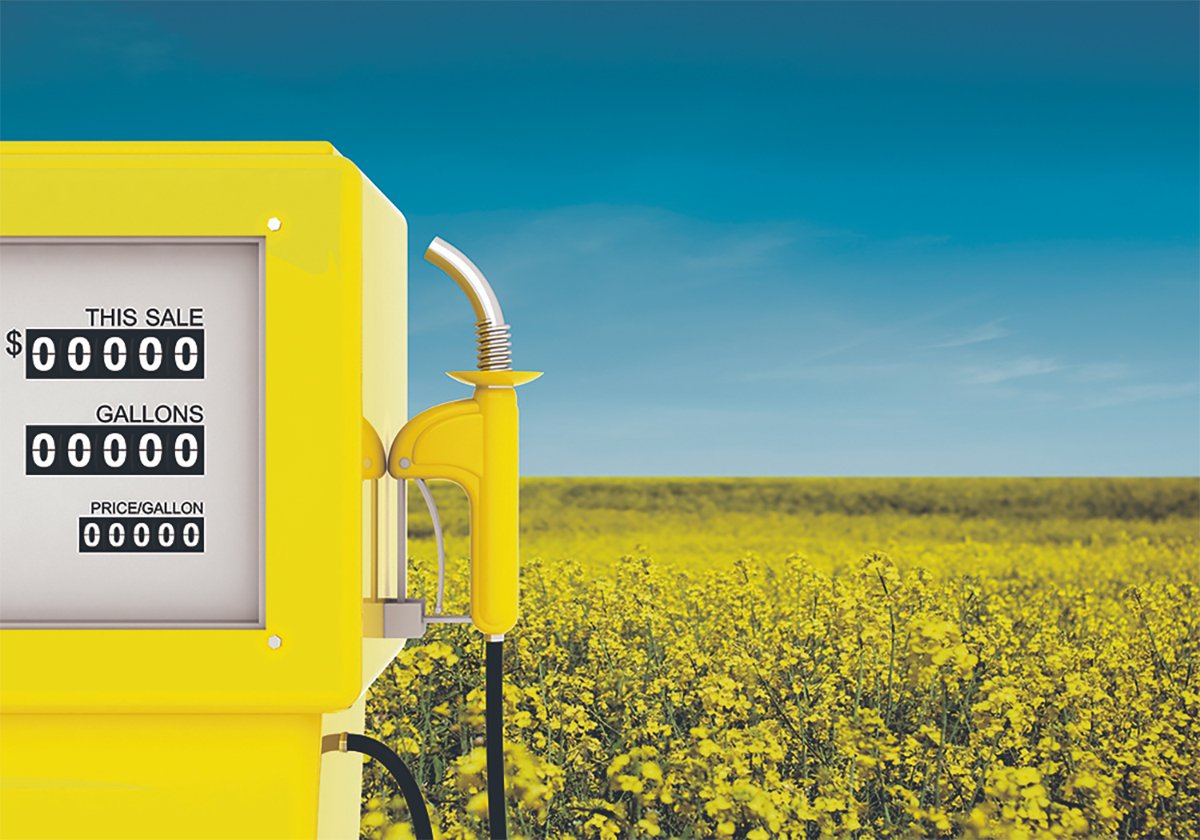To win the Canola Commodity Challenge, the champions of Alberta-British Columbia, Saskatchewan and Manitoba had to beat themselves.
They had to do what they didn’t want to do, but knew needed to be done.
“It comes down to getting the emotions out of it,” said Marty Daalder, who at $261.04 per tonne achieved the highest price.
Players averaged $231.04 per tonne in B.C., $230.53 in Alberta, $226.92 in Saskatchewan and $227.63 in Manitoba.
At $238.90 per tonne, I avoided the bottom half, but fell far short of the Manitoba champion’s score.
Read Also

Biofuel sector happy with federal budget
Advanced Biofuels Canada says new Biofuel Production Incentive is a lifeline until CFR amendments are in place.
Because of different basis levels in the various provinces, a direct comparison is difficult, but Daalder beat his nearest Alberta-B.C. competitor by almost $11 per tonne.
Terrance McKee of Moose Jaw, Sask., beat his nearest rival – also called Terrance McKee – by more than $8 per tonne, by getting $258.29 per tonne. That’s an achievement, considering that the two McKees are the same person. He opened two accounts and followed different methods.
The next closest Saskatchewan competitor came in another $1 down.
In Manitoba, Neil Sabourin was the champ, averaging $255.52 per tonne, edging his closest provincial competitor by 61 cents.
The three regional champions share three attributes: they followed the same basic strategy; they overruled their emotional revulsion at selling canola at a relatively low price; and they work for Cargill as marketing advisers.
“You gotta like that. It’s kind of nice to be right,” said McKee, who like Daalder priced his 1,000 bushels of virtual crop near the start of the contest and missed the autumn market meltdown.
“The futures prices weren’t too bad (at the October start of the contest) and everything was pointing to a lower price, so the logical thing to do was to sell it all.”
Sabourin locked in profitable prices for about 70 percent of his crop right away, and used several pricing mechanisms to try to catch a rally for the rest.
McKee used the deferred delivery contract to sell all of his canola within the first week of the contest. He also, for fun, created another account and in it used several pricing options to beat his other account.
“I used about every tool available … but nothing did as well as selling it all when it looked like (the market) was going to fall apart,” said McKee.
The second account was also quickly priced in, so both were variations on the theme of “sell it now.”
Daalder followed the same theme, selling everything within a week.
“I looked at the market, and rather than getting emotional, I looked at some supply and demand numbers,” said Daalder, who knew what a 1.6 million tonne carryover and a big crop just harvested could mean for prices.
“I just went out and sold it all.”
But instead of the simple deferred delivery contract, he used a grain pricing order. That allowed him to set a trigger price above the current market price, with an expiry date that would automatically set the price if the trigger wasn’t pulled.
He did this because he thought there might be a tiny bit of short term upside left in the market.
“I figured the technicals might throw in an extra couple of bucks,” said Daalder.
He was right, as a couple of fluctuations within a week triggered the sell orders and he was sold out. He didn’t bother playing with basis levels, because the huge crop meant there was little reason for buyers to bribe farmers to deliver.
The key was selling the canola at what logic said was a good price, although it was a price that sickened most farmers.
In the end, he was happiest that he locked in a profitable price for his canola, even in this bad year.
“I certainly wasn’t planning on being first place,” said Sabourin.
“If I had tried for that, I might have ended up sitting around and missing it. But I was looking at locking in break-even prices, because you can never go broke locking in profitable prices.”
All three winners are farm marketing advisers with Cargill, one of the contest sponsors, but they say they had no special knowledge or information about the market. They just followed their own advice.
“That’s what we were telling lots of guys to do,” said McKee.
Added Daalder: “This is what we’re trying to teach the farmer. Grain marketing is our business.”
He conceded that selling an entire crop in a week is a bit more radical than he might advise in the real world, but the principle of “sell soon” was his advice to farmers.
“Marketing everything in one shot is not a strategy that I’d recommend to anyone, but when something is good, sell something,” he said.
Daalder, who used to be the grain marketing coach for all of Alberta for Cargill, wanted to demonstrate that looking at fundamental supply and demand numbers would bring better results than going on emotion.
“If you can pick the peak of the market, it’s luck, not a strategy,” said Daalder.
“But it would have been kind of embarrassing if I had come out at the bottom with all the knowledge and background that I have.”















